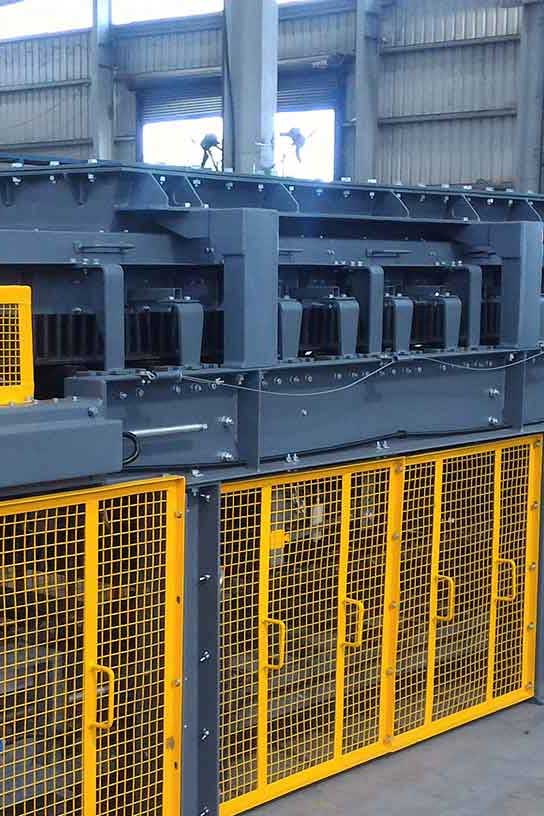Apron feeders and apron weigh feeders are two different types of equipment used for transporting bulk materials. While they share some similarities, there are also significant differences between them. This article will compare apron feeders and apron weigh feeders, discussing their differences and similarities, as well as their respective advantages and disadvantages.
Apron Feeders
An apron feeder is a type of conveyor that is used to transport bulk materials. It consists of a series of overlapping pans or plates that are attached to chains and driven by sprockets. The pans move along the length of the feeder and scoop up the material, which is then carried along the length of the feeder and discharged at the end.
Advantages of Apron Feeders
- High durability: Apron feeders are built to withstand harsh operating conditions, such as high temperatures, heavy loads, and abrasive materials. This makes them ideal for use in industries such as mining, cement, and power generation.
- Adjustable feed rate: Apron feeders can be adjusted to control the flow rate of materials. This allows operators to optimize the feed rate for different types of materials and process requirements.
- Customizable: Apron feeders can be customized to suit different applications, including different material types, feed rates, and operating conditions.
Disadvantages of Apron Feeders
- High initial cost: Apron feeders are relatively expensive compared to other types of conveyors. This can make them less attractive for smaller operations with lower budgets.
- Limited weighing capabilities: Apron feeders do not typically have built-in weighing systems, which can limit their use in applications that require accurate material flow control.
Apron Weigh Feeders
An apron weigh feeder is a type of conveyor that is used to transport and control the flow of bulk materials. It consists of a belt conveyor with a series of overlapping pans or plates that are attached to chains and driven by sprockets. The pans move along the length of the feeder and scoop up the material, which is then carried along the length of the feeder and discharged at the end. A weighing system is incorporated into the feeder to continuously measure the weight of the material on the belt conveyor.
Advantages of Apron Weigh Feeders
- Accurate material flow control: The built-in weighing system of apron weigh feeders allows for accurate control of the material flow rate. This is particularly important in applications where precise material flow control is critical to the production process.
- Customizable: Like apron feeders, apron weigh feeders can be customized to suit different applications, including different material types, feed rates, and operating conditions.
- Improved efficiency: Apron weigh feeders can improve efficiency by optimizing the material flow rate to match process requirements.
Disadvantages of Apron Weigh Feeders
- Higher cost: Apron weigh feeders are more expensive than standard apron feeders due to the added cost of the weighing system.
- Complex setup: Apron weigh feeders require more complex setup and maintenance due to the additional equipment and electronics required for the weighing system.
- Limited capacity: Apron weigh feeders have a limited capacity compared to other types of conveyors, which can limit their use in high-capacity applications.
Conclusion
Apron feeders and apron weigh feeders are two different types of equipment used for transporting bulk materials. Apron feeders are generally used for uncontrolled material flow applications, while apron weigh feeders are used for accurate and controlled material flow applications. Both types of feeders have their own advantages and disadvantages, and the choice between the two depends on the specific application requirements. If accurate material flow control is critical to the production process, an apron weigh feeder may be the
